Assistant Professor
Department of Entomology
University of California, Riverside
jpurcell@ucr.edu
phone:951-827-7258
Blog
Chasing invasive yellowjackets in Hawaii
August, 2017Madison Sankovitz & Jessica Purcell
We spent August in Volcano, Hawaii investigating a species of yellowjacket wasps, Vespula pensylvanica, in Hawaii Volcanoes National Park along with the Wilson-Rankin lab. These wasps are damaging and invasive to the Hawaiian islands, where they frequently form large, perennial, polygynous (= multi-queen) colonies. Contrasting this, the same species is found in Washington and California, but here they form mostly annual, monogynous (= single queen) colonies. The goal of our trip was to find yellowjacket nests, collect workers, excavate some nests, and set up experiments that will monitor the nests long-term. The overarching aim of this study is to better understand why the invasive nests in Hawaii have multiple queens and last for many years compared to those on the mainland U.S. This is a unique system in the insect world, so we took advantage of the opportunity to study it. We hope to be able to make predictions as to when and which colonies may become perennial, which will inform park managers on how to best control them.
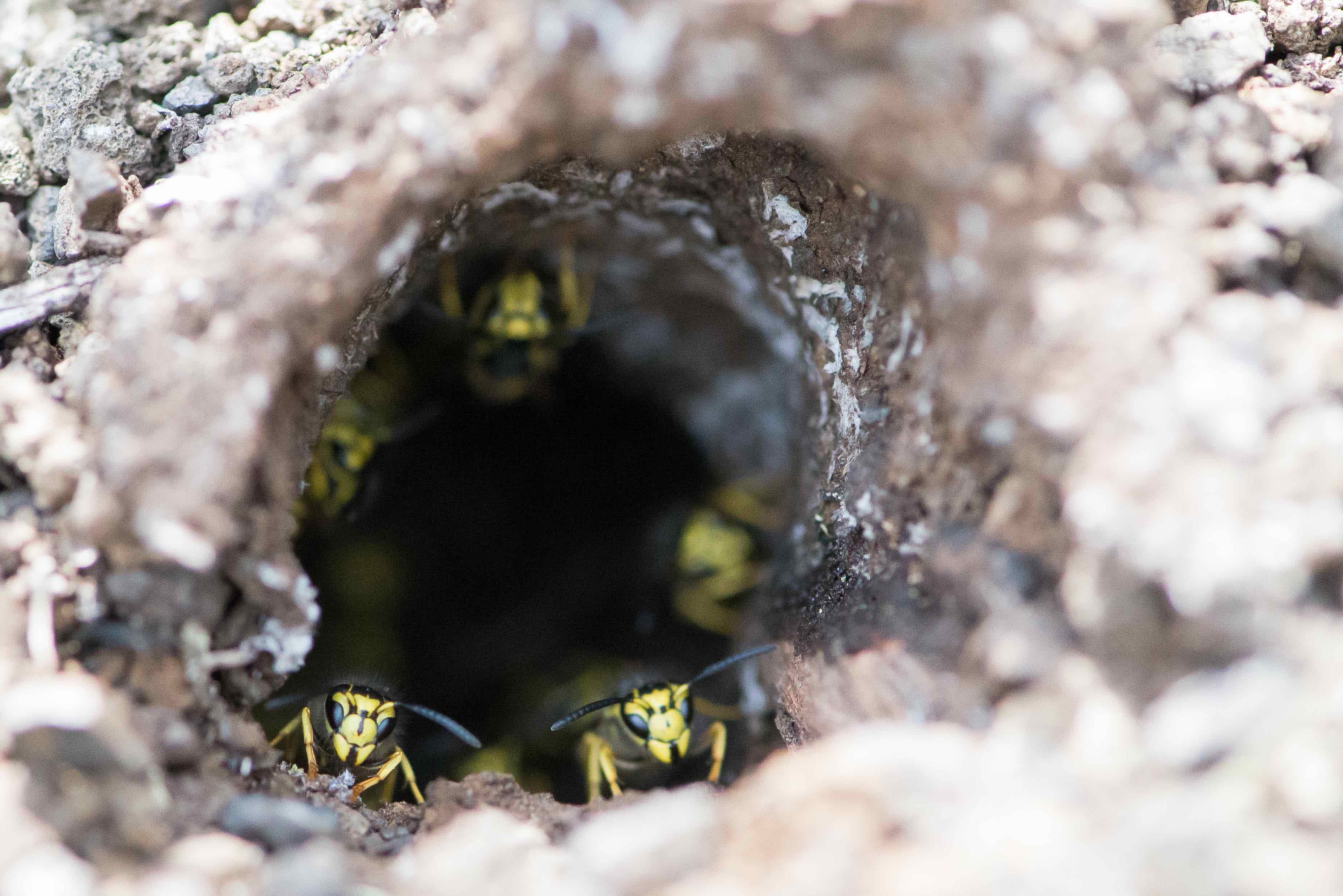
Yellowjackets guarding their nest entrance
While on the Big Island of Hawaii, we stayed at a rental house in Volcano, right next to Hawaii Volcanoes National Park. The park is full of hardened lava, so the landscape appears to be from Mars. Every morning we would leave early in order to get into the park and start working while it was still cool and the light was low, which is most ideal for yellowjacket searching. Finding nests is more difficult as it may seem, since nest entrances are just small holes in the ground and flying, speedy wasps can be hard to detect with the untrained eye. Hence, we used baits to get the wasps to come to us. The baits consisted of (stinky!) canned chicken in a plastic cup. Yellowjackets found these baits surprisingly quickly. Once they landed on the chicken, we painted them with a fluorescent powder that enabled us to see them better as they flew. When a wasp started flying away with a piece of chicken, the exciting action began. Everyone ran after the wasp, trying our best to keep track of it as it led us on a wild goose chase. We communicated with one another using walkie talkies, as sometimes we were split up between baits or even spread out hundreds of meters along one wasp trajectory. The best part of the day was always when someone would exclaim via walkie talkie, “I found a nest!” Our daily nest count ranged between 0-10, and on the day that we got 10 nests (in the morning alone!) we took a half day off work and went to the beach to celebrate! We found 40 nests total.

Hawaii Volcanoes National Park
Nest excavation was perhaps the most exciting task of the trip. Clad in large white bee suits and carrying an assortment of tools and vacuums, looking like the Ghostbusters, we dug ten nests out of the ground and collected as many workers from each nest as we could. We collected workers by vacuuming them into a nest bag, which we later froze and will extract DNA from. We felt like archeologists as we carefully removed soil away from each delicate paper nest and lifted it out of the ground, in-tact. Not all excavations went this smooth, however. A couple of the polygynous nests we attempted to excavate were so large (hundreds of thousands of workers!) that we could never get all the comb out of the ground. At one nest in particular, we returned to it on multiple days and used two vacuums at separate nest entrances, but hardly made a dent in the number of workers flying around. That was our one defeat of the trip.
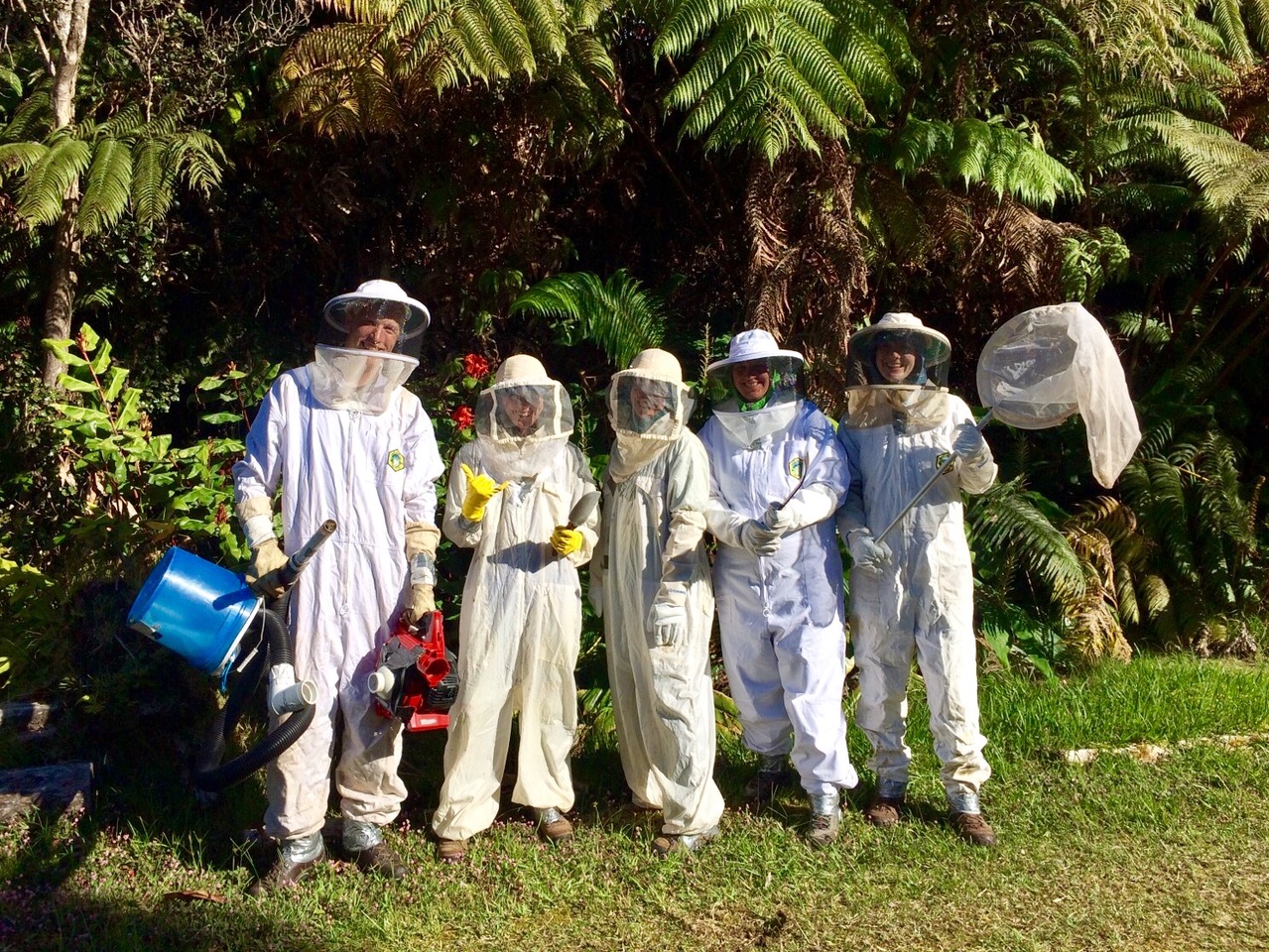
The group just before excavating our first nest
Left to Right: Kevin Loope, Stephanie Gayle, Erin Rankin, Jessica Purcell, Madison Sankovitz
The nests we excavated came from people’s yards. Everyone was ecstatic that we removed their nests, and they thought it was amazing that people wanted to do this kind of work! In this way, we met many interesting people around Volcano, including Jeff, a generous beekeeper, Bud, a photographer who designed and built his own house, and Terrence, who welcomed us into his home and is passionate about eradicating invasive plant species.
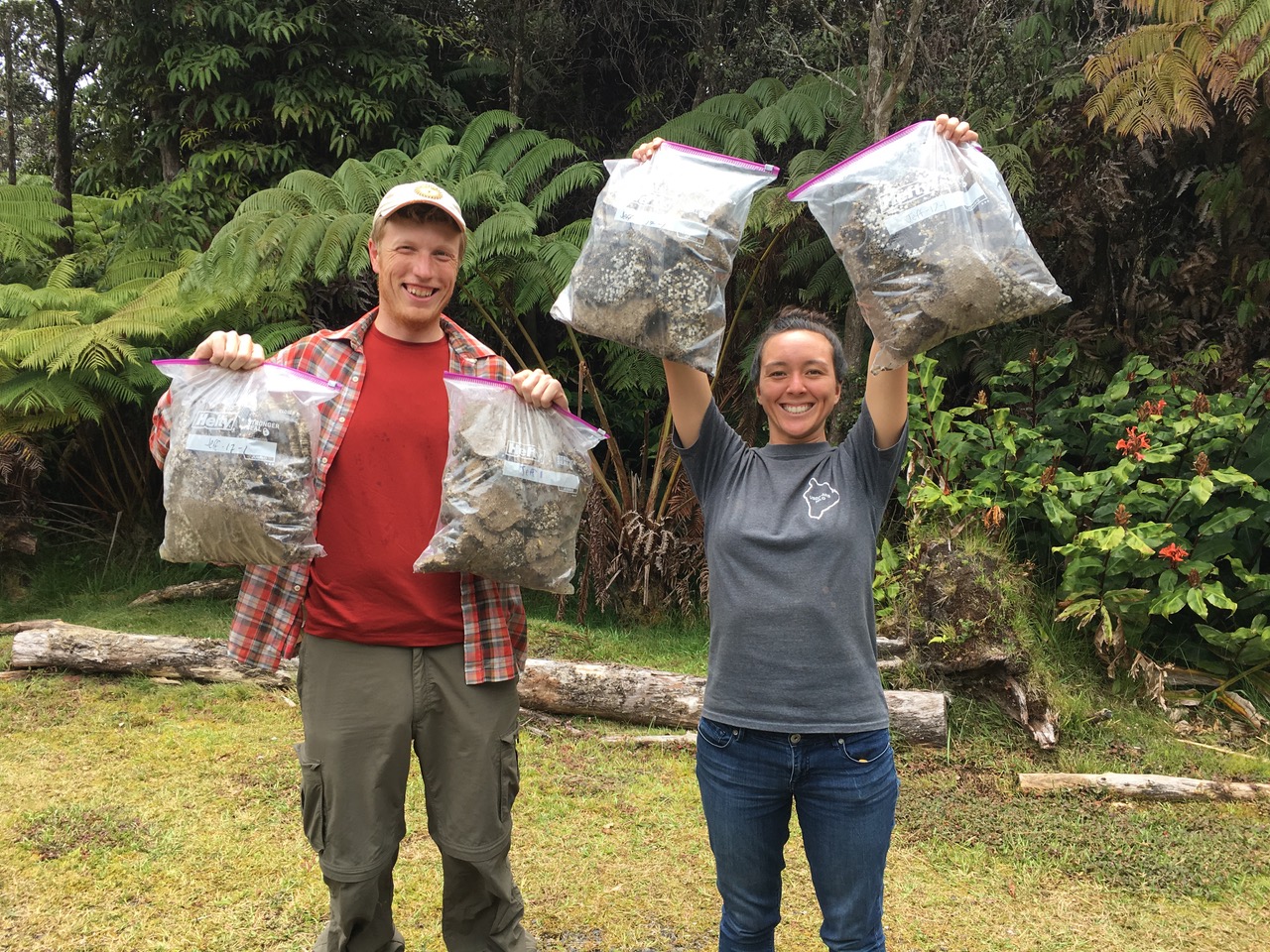
Kevin and Stephanie with bags of comb from the largest nest we excavated
In addition to field work, we had many fun adventures, including a sunset picnic on the volcano Mauna Kea, seeing green sea turtles at Punalu’u Black Sand Beach, seeing Ho'lei volcanic sea arch and molten lava flowing into the ocean at night, and snorkeling at Kapoho Tidepools. But mostly, we enjoyed doing fieldwork in the beautiful, lava-filled landscape of Hawaii Volcanoes National Park!
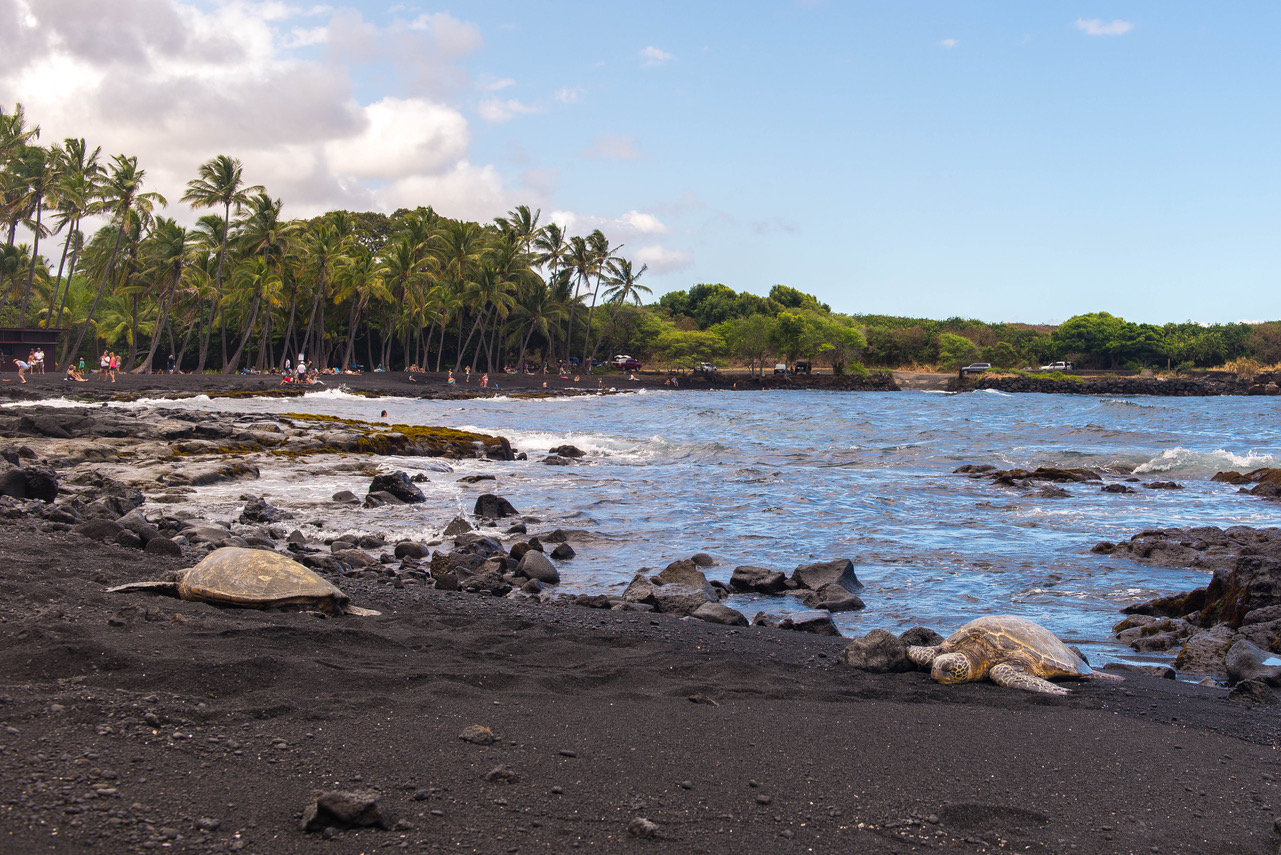
Green sea turtles at Punalu’u Black Sand Beach
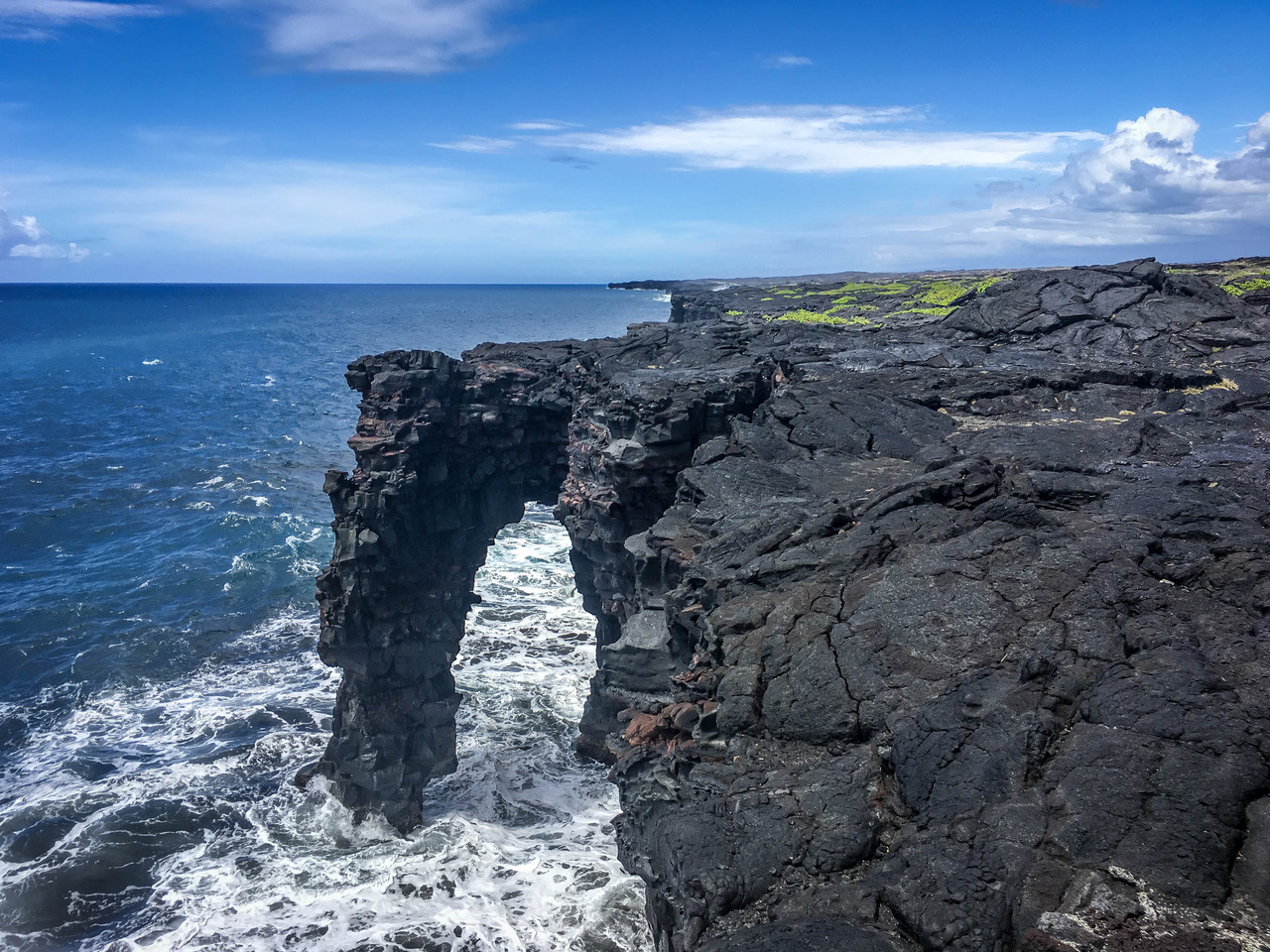
Ho'lei Sea Arch




